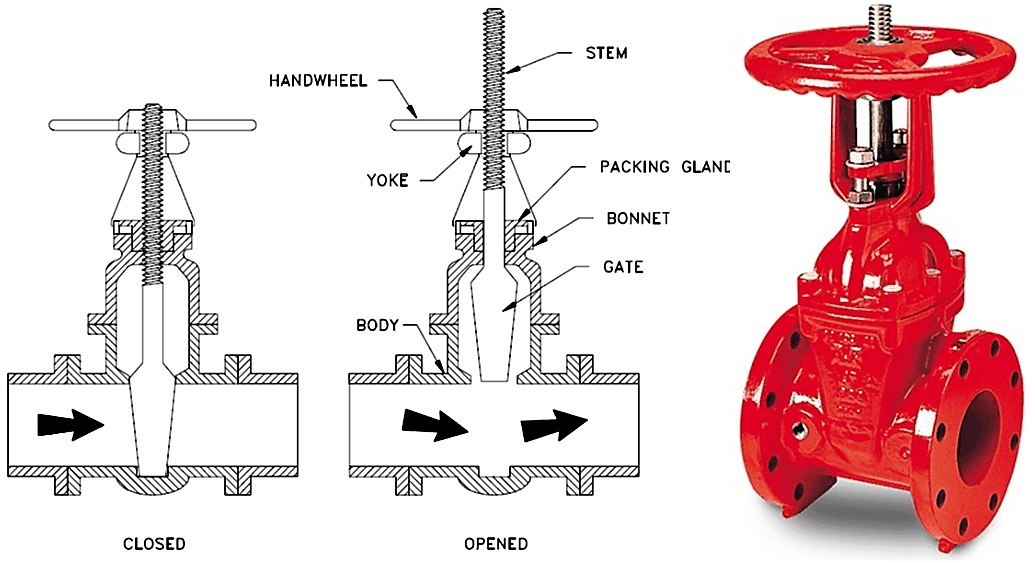
Types of Gate Valve and Parts A Complete Guide for Engineer
Gate valves are a common linear valve type found in pipelines, both above and below ground. A gate valve is designed to start and stop the flow of liquid through ducting, allowing users to isolate a section of pipe when required. They are often called water gate valves or sluice valves.
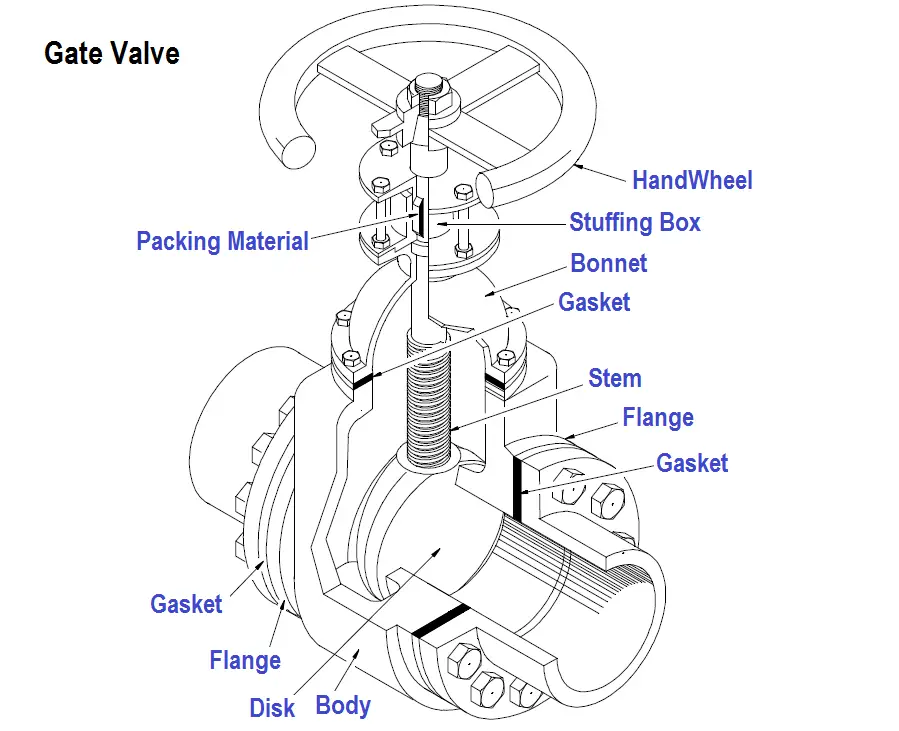
What is Gate Valve ? Gate Valve Parts Disadvantages of Gate Valve
Diagram 9 PNEUMATIC GATE VALVE WITH SOLENOID . GATE VALVE GENERAL INFORMATION Gate Valve Operation Description Pneumatically actuated gate valves are opened and closed by applying air pressure to either side of a piston located in the air cylinder of an actuator housing. The Gate Valve cycle time is controlled by air pressure entering into
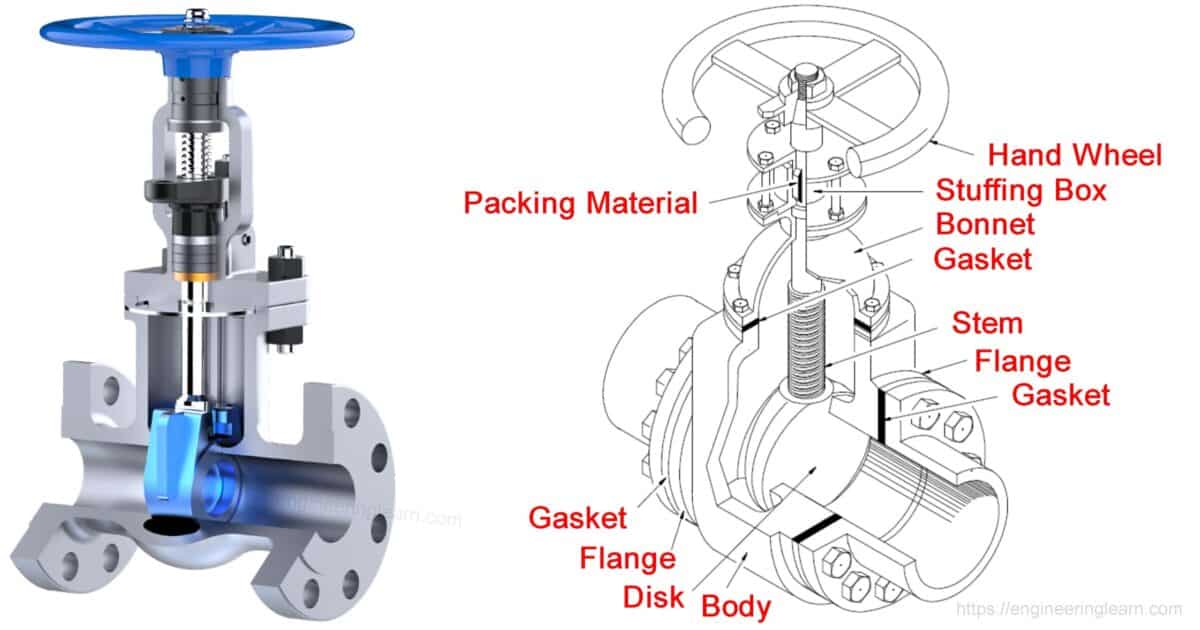
gate valve diagram with parts Gate instrumentationtools disadvantages
A gate valve is a linear motion valve used to start or stop fluid flow; however, it does not regulate or throttle flow. The name gate is derived from the appearance of the disk in the flow stream. Figure illustrates a gate valve. The disk of a gate valve is completely removed from the flow stream when the valve is fully open.

GATE VALVE WORKING PRINCIPLE Mechanical Engineering Professionals
A Gate valve is a linear-motion manual valve that has a vertical rectangular or circular disc that slides across an opening to stop the flow that acts as a "gate".

What is Gate Valves Diagram , Working , Advantages , Applications
The gate valve symbol used in piping and instrumentation diagrams (P&ID) is a modification of the valve symbol, which is the gate valve symbol without the vertical line between the triangles. The three isometric symbols in the diagram indicate symbols for butt-welding end connections, flanged ends, and socket ends connections.

Gate Valves Introduction, Types, Applicable Codes and Standards
Functioning Principle The body, seat, gate, stem, bonnet, and actuator are the essential components of a gate valve. The primary mechanism of operation is straightforward. Common gate valves are activated by a threaded stem that connects the actuator, e.g., handwheel or motor, to the gate.
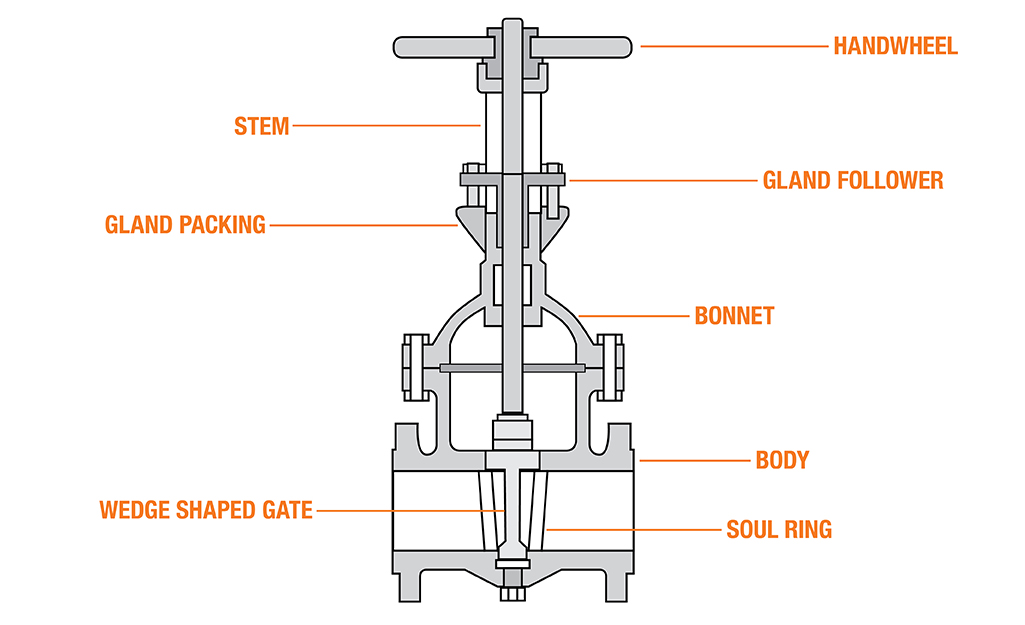
Ball Valves vs Gate Valves The Home Depot
A gate valve is a wall that has dual flow directions. It is not subject to the flow direction of the medium. Therefore, it is suitable for use in the pipeline where the medium may change the flow direction. Disadvantage of Gate Valve: The following disadvantages or demerits of Gate Valve is: We cannot use a gate valve for controlling the flow.
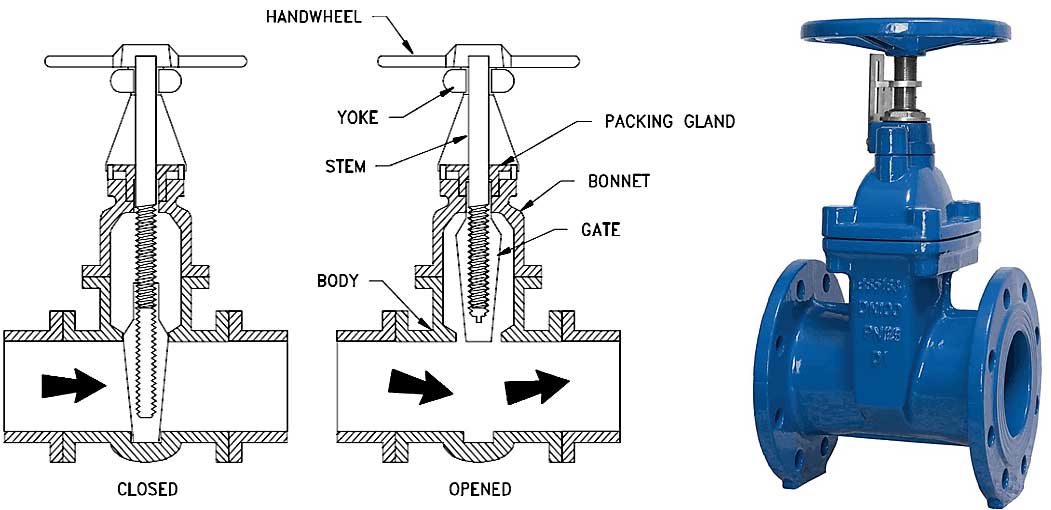
GATE VALVES Types Bertrem Products Inc.
Gate Valve Components. The main parts of the gate valve include body, gate, bonnet, stem, packing gland and yoke. Gate valve construction; Credit: CC BY-SA 4.0. The body of a gate valve holds all of the operational parts of the valve. It is connected to the system with one of the mounting options below.
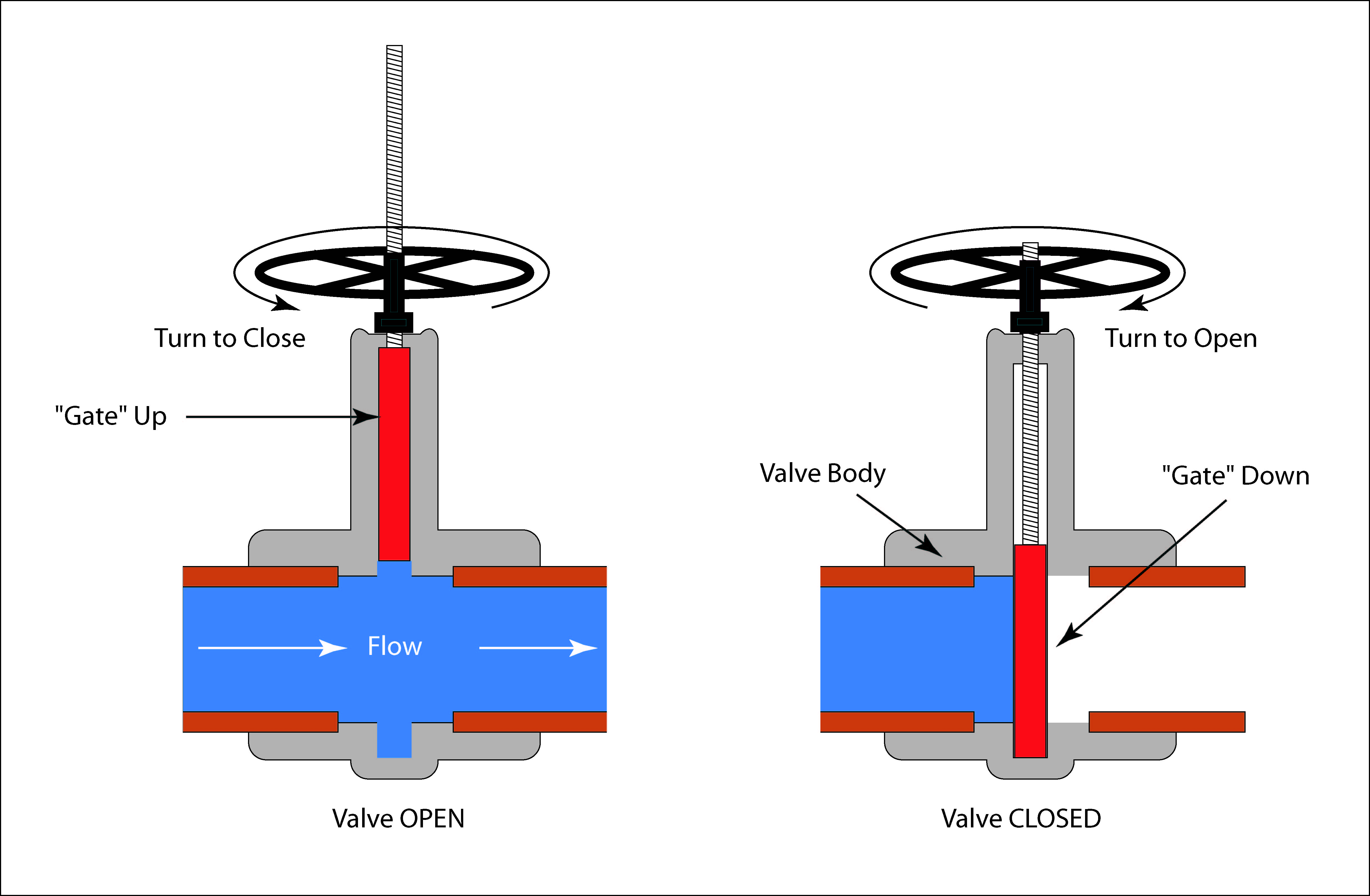
Valves Manual Valves Gate and Butterfly Valves CTG Cleaning Technologies, Inc.
A gate valve can be defined as a type of valve that uses a gate or wedge-type disk, which moves perpendicular to flow to start or stop the fluid flow in piping. It is the most common type of that used in any process plant. It is a linear motion valve used to start or stop fluid flow.
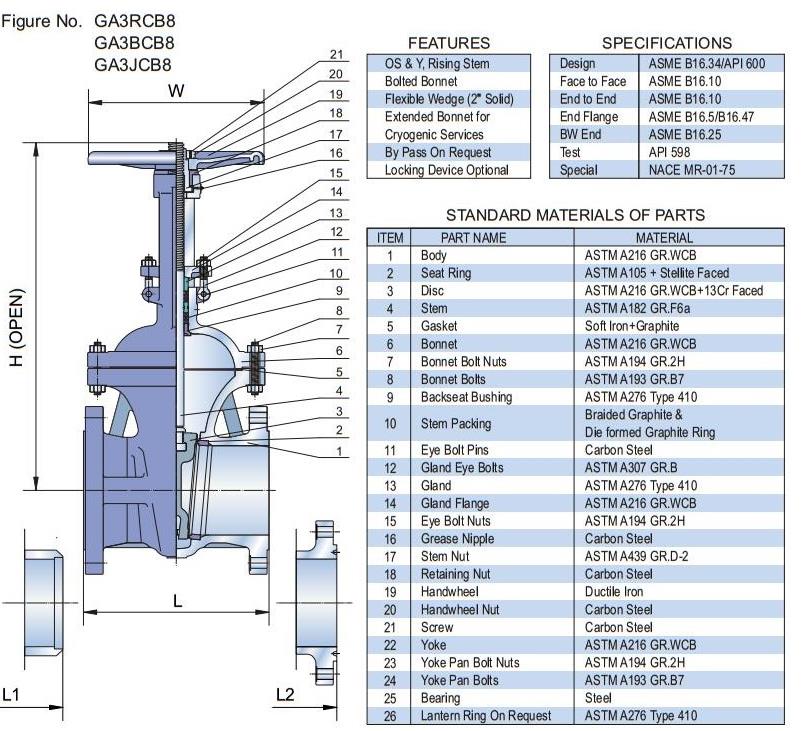
Cast Steel Gate Valve, Drawings, Dimensions & Weight Relia Valve
Types of Valves Different types of valves are used in piping. In this article, we cover the types and classifications of valves of valves. Here are the main types of valves: Gate Valve Globe Valve Check Valve Plug valve Ball Valve Butterfly Valve Needle Valve Pinch Valve Pressure Relief Valve Gate valve
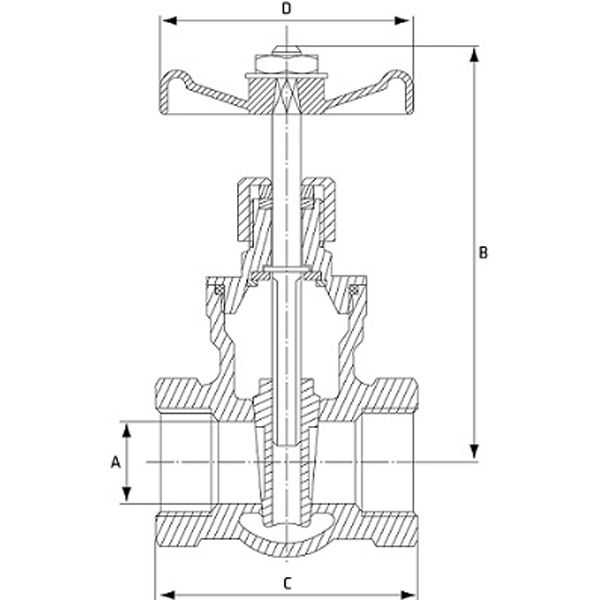
gate valve diagram construction Parts of gate valve plus top 5 functions hpd team
Gate valves (also known as knife valves or slide valves) are linear motion valves in which a flat closure element slides into the flow stream to provide shut-off. They are one of the most common valves used. Find Gate Valves by Specification or See our Directory of Suppliers Gate valve. Video Credit: CTE Skills.com / CC BY-SA 4.0
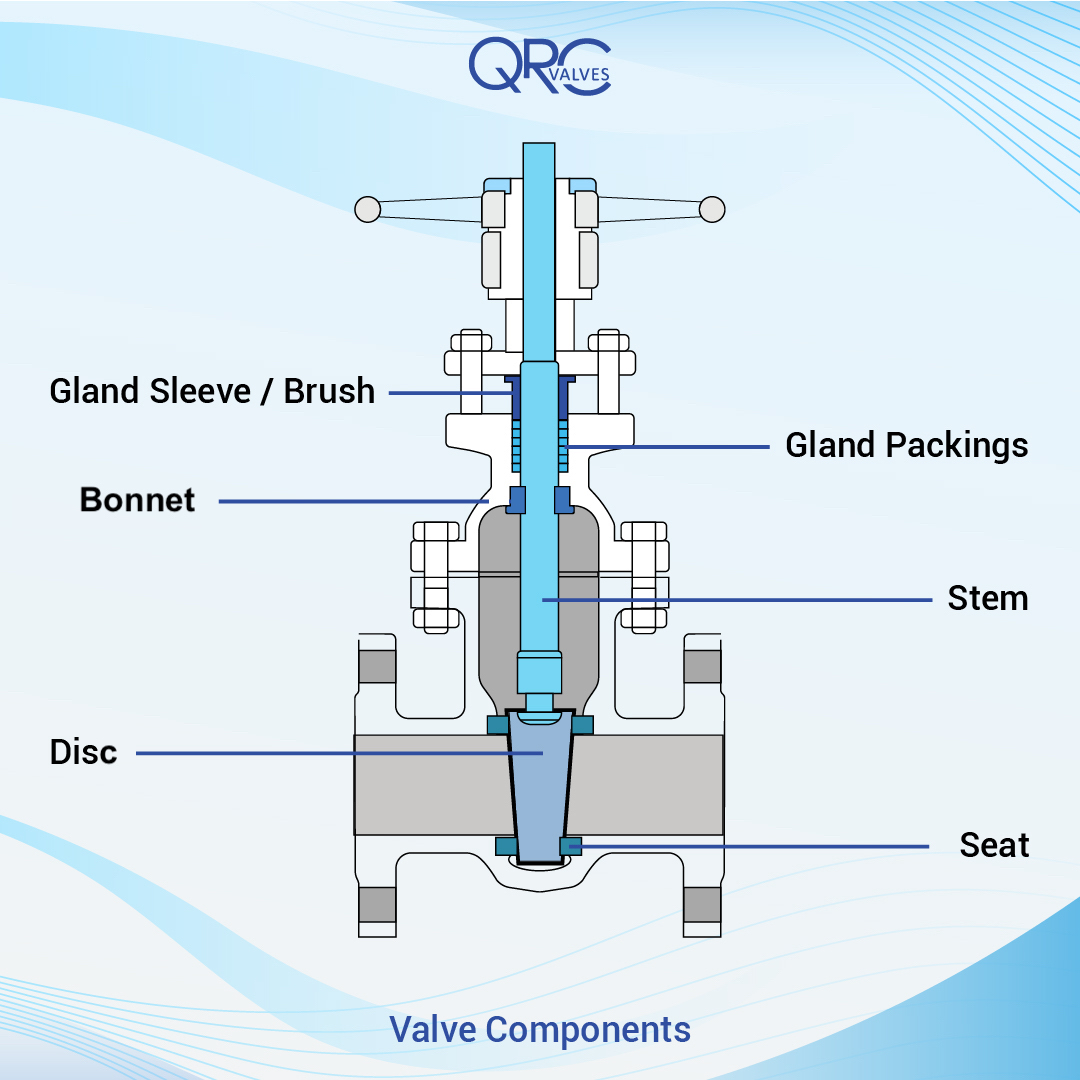
Gate Valve Components QRC Valves
The gate valve refers to a valve in which the gate closing member moves along the vertical direction of the center line rising stem gate valve-open and closed position of the passage. Generally, it consists of valve body, valve seat, valve stem, gate, valve cover, and sealing ring.
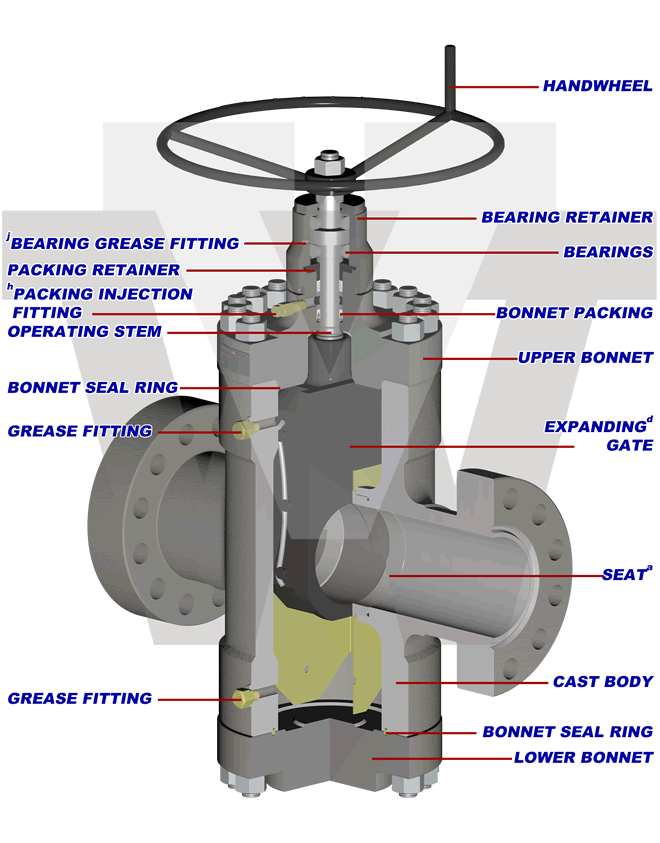
FM4 SERIES GATE VALVES Valveworks USA
Apply 3-in-one or penetrating oil to the gate valve. Wipe the excess oil with a rag and ensure that the oil reaches the valve's threads. Tap the valve handle with a hammer to check if the valve changes position from open to closed. Attach an adjustable wrench or channel lock on the valve handle.
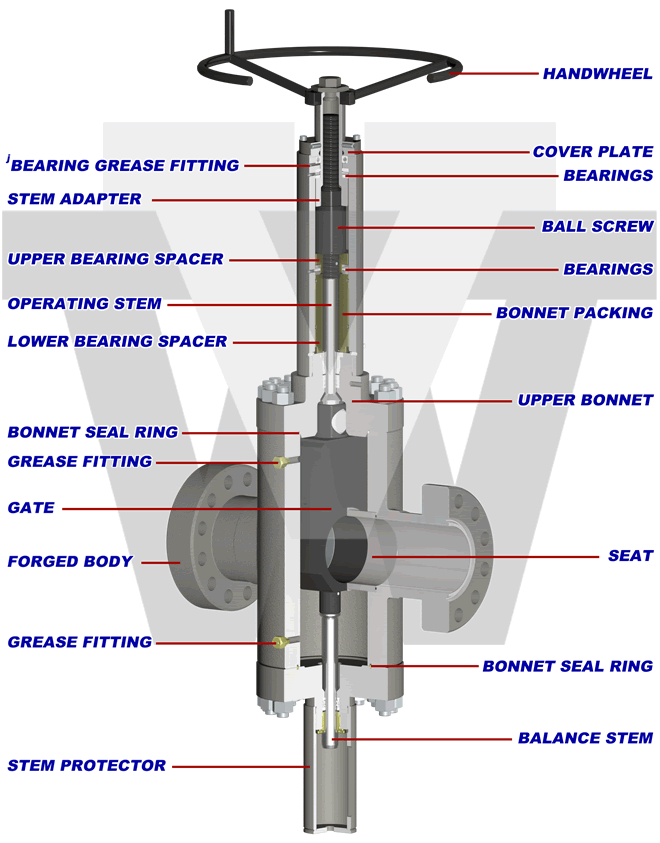
FM4 SERIES GATE VALVES Valveworks USA
When you look at a gate valve diagram or a gate valve parts diagram, you can see the major components that make up this powerhouse: the body, the bonnet, the stem, the gate or disc, and the seat rings. At the heart of the valve, the valve body houses the valve's internals and is typically made of ductile iron, cast iron, or stainless steel.
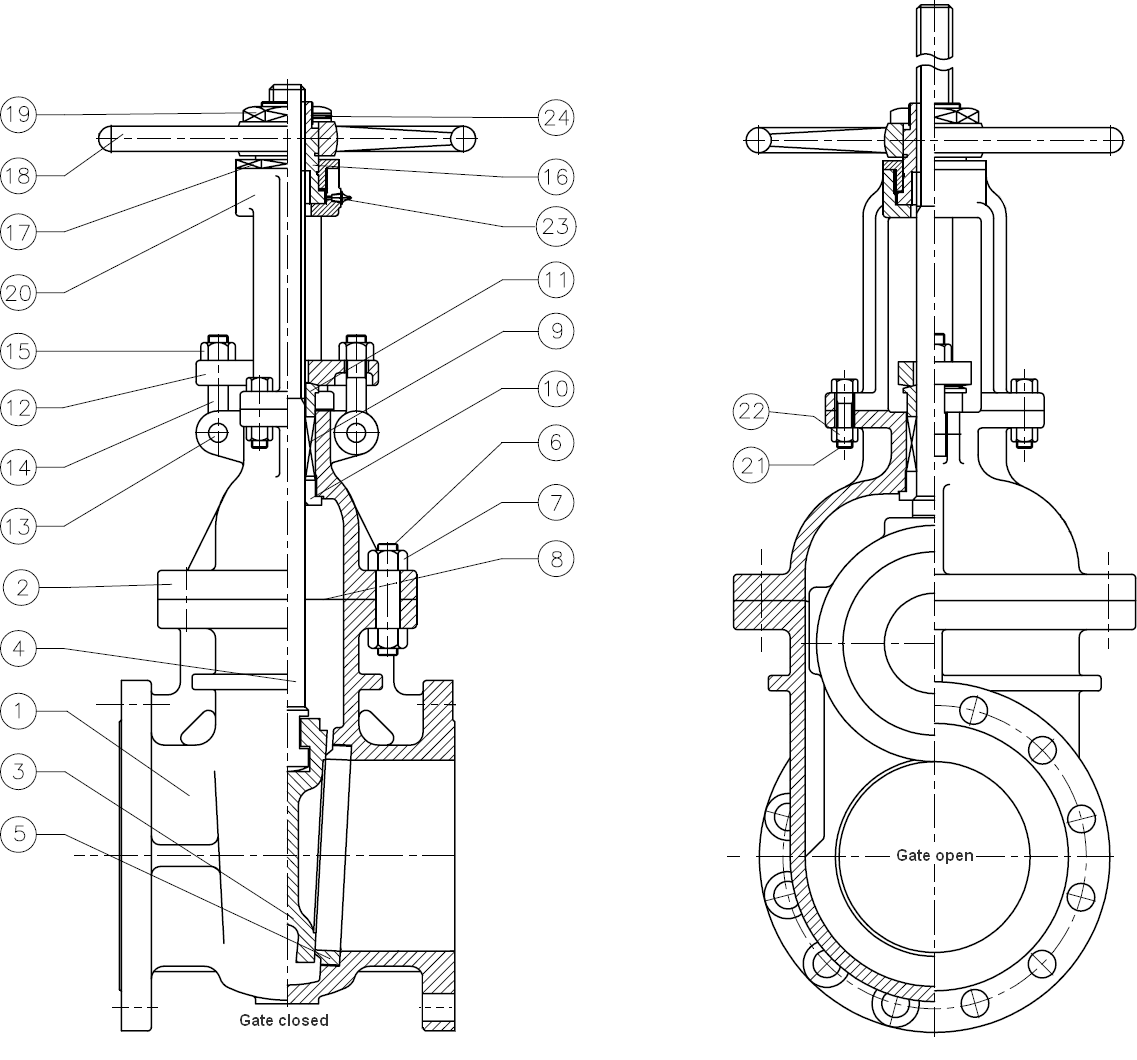
Technical drawing of a Rising Stem Gate Valve OSandY
gate valve, also known as a sluice valve, is a valve that opens by lifting a barrier (gate) out of the path of the . Gate valves require very little space along the pipe axis and hardly restrict the flow of fluid when the gate is fully opened.

What is an Industrial Gate Valve? MSEC
Stem Gate valves can have a rising or nonrising stem design. Rising stems are attached directly to the gate and provide a visual indicator of the valve position. Nonrising stems are generally threaded into the upper part of the gate and have a pointer threaded onto the top to indicate position.